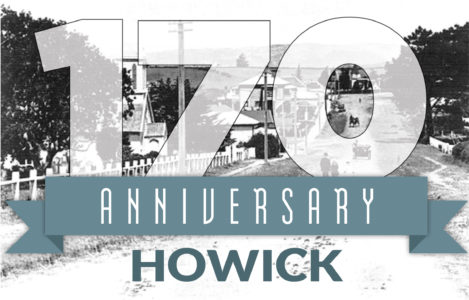
As Howick and districts count down to the 175th anniversary, the Times continues its series giving readers a glimpse of life as it used to be
By Alan La Roche
Early settlers of Howick had many ways of foretelling the weather. The weather dominated their diaries as it was very important to their livelihoods and ruled their lives. If it rained on freshly cut wheat or oats crop it could have disastrous results.
It is said that many Irish hung Neptune’s necklace seaweed or sea-grapes with seawater filled beads from Waipaparoa-Howick Beach on a nail in their cottage porch. If it was soft and damp it will rain. If it was hard and dry no rain will arrive today. Salt in the saltbox by the fireplace was similar. If the salt was runny and viscous rain was predicted. In good weather salt was dry and free-running. A salted ham or bacon hanging in the kitchen shows salt crystals sparkling on cold days or has a pearl appearance in wet weather.
Red sky at night was widely accepted as good weather tomorrow. But red sky in the morning was ominous. If it rained overnight the horses of the horse-buses could slip over on Howick’s wet clay roads. If you could see Rangitoto with her head in a cloud, rain was close or it was raining.
Today heavy frosts are rare but 100 years ago they were common. The old village fields down Moore and Wellington Streets were glistening white after a frost. Frozen puddles took days to thaw. School students stood in warm fresh cow-dung which warmed frozen feet. The frosts used to kill young mangroves to halt their expansion.
Pakuranga was called the “granary” of Auckland for about 100 years. Farmers harvesting wheat, oats, barley or hay watched the weather closely. William Mason, who farmed Bucklands-Eastern Beach and later sold it to Alfred Buckland, had a barometer in 1861 to indicate changes in barometric pressure. Most farmers did not have these expensive items.
In winter Pakuranga farmers used to say “there’s an iceberg at the heads”. The prevailing south-west winds from Manukau Heads thundered across farms and down the Tamaki River valley. Bleak House farmers on the ridge of Bleak House Road planted quick-growing trees to cut some of the wind blast.
Early settler doctors sometimes used leeches for healing. In calm hot weather leeches are motionless, but in rainy weather are very active. Seagulls fly inland during windy wet weather partly as fish swim deeper and are more difficult to catch.
Pukekos feed more vigorously before rain. Our native bees living in clay banks continue to gather pollens in cloudy or windy weather unlike the European honey bees which return to the hive. Bumble bees work from dawn to dusk no matter what the weather gathering nectar or pollens. Some local farmers complained that mosquitoes and sandflies were much more active before it rained.
Today we have many resources for weather prediction but it is still very important to our farmers’ lives.
Alan La Roche, Howick Historian






